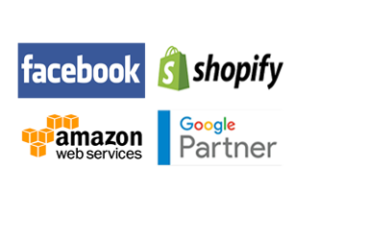

How To Choose Technology For Web Development
Choosing the right technology stack for web development is a critical decision that can impact the performance, scalability, and long-term success of your website. With numerous options available, selecting the appropriate technology can be overwhelming. In this blog post, we will guide you through the key considerations to help you choose the right technology for web development.
1. Understand Your Project Requirements:
Start by understanding your project requirements and objectives. Consider factors such as the complexity of your website, expected traffic volume, desired functionalities, and future scalability. Determine if you need a content management system (CMS), e-commerce capabilities, real-time interactions, or integration with external systems. By identifying your specific needs, you can narrow down the technology options that align with your project requirements.
2. Evaluate Programming Languages:
Selecting the right programming language is crucial for web development. Each language has its strengths and uses cases. Consider popular options such as JavaScript, Python, PHP, Ruby, or Java. Evaluate factors such as community support, availability of libraries and frameworks, scalability, performance, and the expertise of your development team. Choosing a widely adopted language with an active community can ensure ongoing support and access to resources.
3. Assess Frameworks and Libraries:
Frameworks and libraries can significantly streamline web development by providing pre-built components and structures. Evaluate popular frameworks like React, Angular, Vue.js, Django, Ruby on Rails, or Laravel. Consider factors such as ease of development, scalability, community support, and available documentation. Frameworks that align with your chosen programming language and project requirements can expedite development and improve efficiency.
4. Consider Database Management Systems:
The choice of a database management system (DBMS) is crucial for storing and managing your website’s data. Evaluate options such as MySQL, PostgreSQL, MongoDB, or SQLite. Consider factors such as data structure requirements, scalability, performance, security, and the expertise of your development team. Each DBMS has its strengths, such as relational databases for structured data or NoSQL databases for flexibility and scalability.
5. Analyze Hosting and Deployment Options:
Consider hosting and deployment options for your web application. Evaluate whether you prefer traditional shared hosting, virtual private servers (VPS), cloud-based solutions like Amazon Web Services (AWS) or Microsoft Azure, or platform-as-a-service (PaaS) offerings like Heroku or Netlify. Factors to consider include scalability, performance, security, ease of deployment, cost, and support for your chosen technology stack.
6. Take Security into Account:
Web security is crucial to protect your website and user data. Ensure that the technology stack you choose has robust security features and follows best practices. Consider factors such as built-in security mechanisms, encryption standards, vulnerability patching, and protection against common threats like cross-site scripting (XSS) or SQL injection. Choosing a secure technology stack will help safeguard your website and user information.
7. Evaluate Community Support and Documentation:
Having strong community support and extensive documentation for your chosen technology stack is invaluable. A vibrant community provides access to forums, tutorials, code samples, and libraries that can assist in development. It also ensures regular updates, bug fixes, and improvements. Evaluate the activity level and responsiveness of the community associated with the technology stack you are considering.
8. Consider Long-Term Scalability and Maintenance:
Think long-term when choosing a technology stack. Consider whether the chosen technologies can support the future growth and scalability of your website. Assess factors such as the availability of skilled developers, the ease of finding support or outsourcing development, and the long-term viability of the technology stack. Additionally, consider the ease of maintenance, updates, and ongoing support required for the chosen technologies.
Choosing the right technology stack for web development requires careful consideration of your project requirements, programming languages, frameworks, database management systems, hosting options, security, community support, and long-term scalability. By evaluating these factors and aligning them with your project goals, you can make an informed decision. Remember, the right technology stack will empower you to develop a robust, scalable, and secure website that meets your business needs and provides a seamless user experience.


